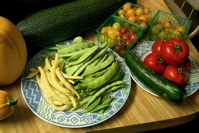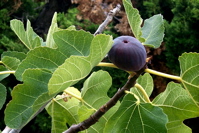At the Charles Street Gardens, Sunnyvale's community garden, we have a number of permaculture areas referred to collectively as the Food Forest. I've been reading a fair bit about permaculture over the years. I also have been longing to try some of the more unusual agricultural techniques that are coming out of the movement. In Toby Hemenway's new edition of "Gaia's Garden: A Guide to Home-Scale Permaculture" I found an intriguing reference to a "food meadow" rather than a "food forest". Since we're not allowed to plant new trees where I live, this sounded great!
The food meadow takes advantage of the garden plot's natural flaw: that it is a clearing ready to be colonized by any and every type of plant. By selecting a mix of wild and cultivated plants that form a natural meadow, we can theoretically hold down weeds and occupy the garden with a healthy mix of plants.
The spring meadow garden mix I've put together will be used on my large garden bed, which is approximately 3x18 feet. I sheet mulched it with Santa Clara SMART Center compost, which has been hot-composted to 140 degrees and therefore is *not* full of active weed seeds-- unlike my own compost, which doesn't usually come up to temperature and is a source of all kinds of seeds ranging from tomato to squash to lots of bunch grass.
What kinds of things did I put in the food meadow? Lots of umbelliferae, including dill, fennel, purple carrots, orange carrots. Some brown seed mustard and some red giant leaf mustard. Lots of different lettuces, some radishes, some beets. Breadseed poppies. Semi-wild salad greens like chickweed, purslane, and miner's lettuce. I'm pretty excited to see what happens!
What about one's traditional garden crops such as summer squash, tomatoes, peppers, etc? Those will be planted in some of the holes left when harvesting carrots, radishes, beets, and the like in early summer.
I'll probably seed the garden bed tomorrow before it rains on the weekend. I want the seeds to get naturally watered, but don't want to lose too many to scratching birdies before the rain sets in!
Labels: food meadow, mybayareagarden, permaculture









